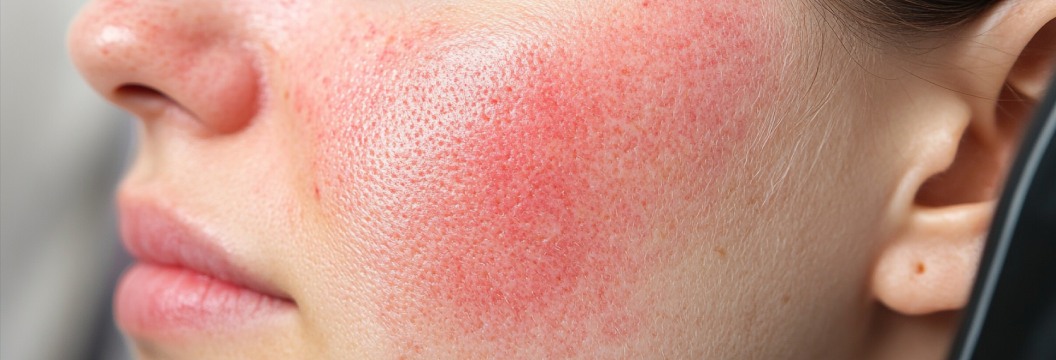The larger and more seasonal regions of Canada influence the skin more. From freezing Arctic winds to dry Prairie winters and humid summers in coastal areas, each region presents unique challenges to the skin due to extreme conditions. It is important to understand environmental stressors throughout the year to maintain healthy skin. This article will explain how the Canadian climate can affect your skin and what you can do about it.
Canada’s Climate Zones and Skin Impact
Canada is endowed with various climates differing from the subarctic to temperate maritime and continental. In winter, the regions of the interior and north are very cold and long. Coastal provinces enjoy a good dose of moisture through most of the year. This heat wave during summer is also very much in the peculiar conviction that there is nothing as simple as booking a ticket to South. It also varies greatly upon different humidity levels, different skin care needs varying across the provinces.
These changes in temperature, humidity, and air quality influence how the skin reacts. As the body’s outer layer and first line of defense against the environment, the skin must constantly adapt to these shifting conditions. For example, the dry season disrupts the oil-water balance, causing some people to experience seasonal dryness, while others face inflammation year-round or even flare-ups of chronic conditions, which are worsened by sensitivity to UV rays and pollutants.

Dryness and Dehydration in Cold Climates
The most common health complication caused by winter in Canada is dry skin. Cold air reduces moisture and removes humidity from homes, leading to a lack of natural oils and leaving the skin stripped and dry. Regions like the Prairies and Arctic territories, where conditions remain extremely sterile all winter, make your skin increasingly dry, cracked, and sensitive. The decrease in water levels contributes to impaired skin barrier function, which can lead to issues like eczema, psoriasis, and rosacea, with cold and dry weather making the skin more prone to these problems.
Windburn is another common issue in these regions, caused by friction that strips away the protective lipid layer. Unlike natural processes, this results in a red, painful, inflamed face that gives a horse-like appearance, which can be very painful. The solution involves consulting specialists rather than relying solely on occlusive, emollient-based products. Moisturizers that seal in hydration and reinforce the skin barrier are recommended. To prevent the harsh drying effects during winter, it is helpful to use devices that reduce humidity and keep the environment more comfortable.
UV Exposure Year-Round
Even during Canada’s colder months, the sun doesn’t cooperate with those hoping to avoid darkened skin. Ultraviolet rays are fierce. From reflection off surfaces like snow, over 80% of the sun’s rays are bounced back during cooler seasons. In high-altitude and high-latitude areas, UVB rays from the summer sun can be intensified and may reach the skin. Sometimes, sunburn and damage are minor, but they can also have lasting effects.
Most skin cancers’ morbidity is linked to UV exposure levels in the area. During summer, provinces with moderate to high UV radiation, such as Ontario and British Columbia, see increased rates during hot spells. UV rays impact all living things directly and speed up aging, even causing death of cancer cells, especially those related to melanoma. Dermatologists recommend using broad-spectrum sunscreen daily—regardless of temperature or cloud cover. SPF 30 or higher is advised, especially when spending extended time in the snow or at high altitudes.
Urban Environments and Pollution
Different kinds of skin problems are faced by inhabitants of big cities such as Toronto, Montreal, and Vancouver. One thing that is certain is that these environments experience more air pollution than their rural counterparts, with particulate matter of 2.5 microns and nitrogen in the form of nitrogen dioxide infiltrating the skin, leading to oxidative stress. This can cause accelerated aging, signs of tiredness, and inflammation that increases the likelihood of developing or worsening acne and sensitivity.
Pollution can damage the skin barrier and promote the formation of hyperpigmentation-a very common condition in areas with high commuter or industrial activity—thus requiring specific environmental-protecting measures for the skin. Antioxidant serums fortified with strong antioxidants such as vitamin C or niacinamide can protect the skin and reduce free radicals that cause damage. Cleansing products cannot entirely remove the buildup caused by pollutants in the surrounding environment.
The Role of Humidity – Coastal vs Inland Regions
High humidity, common along Canada’s East and West coasts—especially in British Columbia and the Atlantic provinces—peaks during summer. This can keep skin hydrated and may even trigger increased oil production, leading to clogged pores and more acne flare-ups. Conversely, in Alberta, Saskatchewan, and Manitoba, conditions remain quite dry even in summer, with very low humidity levels. As a result, residents in these areas must work harder to prevent moisture loss, often relying on intensive hydrating routines. Meanwhile, those in more humid environments can comfortably use lighter, non-comedogenic moisturizers and gel cleansers. In drier areas, however, a heavier, cream-based product containing glycerin or hyaluronic acid might be necessary.
Seasonal Transitions and Skin Flare-Ups
The seasonal change can always disrupt the routine your skin follows during each transition from one season to another. This is most common during the shift from summer to fall or winter to spring. Many people experience flare-ups of conditions like psoriasis, acne, and perioral dermatitis at this time because their skin takes a while to adjust to new temperatures, humidity levels, and allergens, causing it to overreact or become hypersensitive. Transitional skincare should focus on repairing and gently hydrating the skin barrier. Use a thicker moisturizer, reduce exfoliation, and avoid harsh active ingredients during these periods to help the skin adapt more smoothly. Additionally, ingredients like ceramides, squalane, and panthenol help support the barrier when the seasons change.
Climate Change and Emerging Trends
The above can all be attributed to the increasingly unstable environmental impacts reportedly created by Canada, unpredictable weather, longer wildfire seasons, and changing average temperatures. This simply add to the existing shortfall: smoke and pollutants prematurely age the skin; sudden environmental stress can disrupt the balance of skin or the skin barrier. The dermatologists are witnessing higher rates of so-called environmental dermatitis, marked by dryness, soreness, and inflammation-hence, their faces show disharmony with the external.
As a result, skincare formulations are evolving to address these new challenges, incorporating anti-pollution ingredients, adaptogens, and barrier repair technologies. The current trend reflects a growing consumer awareness of climate issues, with many seeking skincare products that align with these changing environmental conditions and are environmentally friendly.
Final Thoughts
Extreme temperature fluctuations are actually one of the complex problems that Canadian people encounter in maintaining well skin. Winter dehydration, year-long sun exposure or direct UV light, pollution, maybe seasonal changes are its constituents. Because of the very complexity of these solutions, a generic routine for skin-care is not the same. It must be tailored to local climates, including but not limited to the use of ingredients with which to protect your skin, and an understanding of the seasonal patterns to maintain skin health throughout the year.

